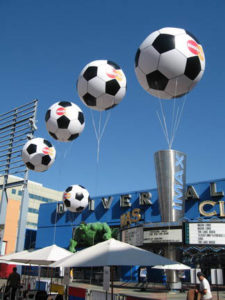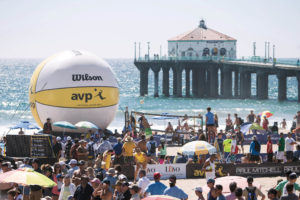Companies that make air- and helium-filled products weigh the risks.

When Pink Floyd’s trademark helium pig got too high at a Coachella concert in 2008 and drifted away, no one got hurt—even though the pink inflatable was, as the Associated Press reported, “as tall as a two-story house and as wide as two school buses.”
In fact, the only real damage was to the deflated pig, pieces of which people who lived near the music festival grounds found in their driveway and draped over a front-yard plant. As for the lucky homeowners, they reportedly got to split a $10,000 reward.
Because inflatables are essentially big pockets of helium or air in light, thin fabric, it’s hard to imagine much that could go wrong.
“Hurricanes—that could go wrong,” says Mark Bachman, owner of Bigger Than Life in San Diego, Calif. “The product itself—the way it’s built—is not inherently dangerous. Active weather conditions can create problems. We spend a lot of time understanding what our customers want to do with the products and make sure they understand the limitations.”
The owner of Air Dimensional Design Inc. in North Hollywood, Calif., acknowledges that wind can be a problem and adds power failure as a potential troublemaker for inflatables that rely on air movement to keep them puffed up.
“If the fan stops working, it can be quite ugly,” Doron Gazit says.
Focus on safety

“The manufacturer of any product has liability risk,” says Robert Crocker, CEO of Canvasland in New Zealand. “We supply operator manuals with all our units. Yes, it requires some skill to operate an inflatable safely. The biggest risk is wind uplifting the units when used outdoors. We supply anchor-point guidelines and give advice on safe operation and crowd control around the unit. We try to assist operators with as much information as possible.
“Not much can go wrong, but you should always ensure there is enough air in the inflatable,” he continues. “It sounds simple, but someone tripping over the power cord of the blower is definitely a risk. At the design stage, strength and rigidity is very important. Internal chamber sizes determine how well an inflatable will stand up and not fold under its own weight.”
Architects of Air in Nottingham, U.K., tours five inflatable environments, primarily under contract for cultural events. The walk-through structures cover up to 1,000 square meters (10,764 square feet).
“The principal thing that could go wrong is the structure being moved by wind,” owner Alan Parkinson says. “We avoid that in numerous ways: incorporating a considerable number of anchor points and ensuring the loading gives a comfortable margin of error; being vigilant about any impending winds; training staff on emergency evacuation; and closing the structure when winds reach 23 miles per hour, even though they are anchored securely enough to normally tolerate winds up to 35 miles per hour.”
Janice Kleinschmidt is a freelance writer and magazine editor based in San Diego, Calif.
 TEXTILES.ORG
TEXTILES.ORG


